Notes on a Journey to the Ever-Dying Lands: A Review of “Lyric Poetry is Dead”
Arturo Desimone’s series on contemporary movements in Latin American poetry for Anomaly.

“Lyric Poetry is Dead, and You are the Killer,” Argentinean poet Ezequiel Zaidenwerg seems to say with this bilingual edition published by Cardboard House Press.
Lyric Poetry Is Dead wears a fun, deceptive title — one thinks of “Punk is dead’’ or “Punk’s not dead!’’ Weary readers might assume the title transmits a predictable message, the umpteenth playful celebration of the death of lyricism, yet another anachronistic rebellion against romantic bohemian impulses. Such easy revolts require little mobilisation — the vanguardism of the establishment long ago triumphed over any remaining “lyricism” which has not, in recent decades, remained anywhere close to cultural hegemonic status in any country. Fortunately, Lyric Poetry is Dead quickly reveals itself as a protest — only half-cynical, elsewhere tender — against the hegemonic and academic forces of antipoetry, making it in places a genuinely antagonistic collection.
“oblivious to the omen, they took away the body
and an imposter came to dictate a false will,
and covered himself in her bedclothes,
which were still warm.
Lyric poetry
is dead. “Of natural causes,” as
the spokesman stated, “after battling
a cruel disease
for many years.”
(End of press release.)”
La Lírica Está Muerta recounts the tale of a tragic murder in Argentina, the poet’s estranged home country (Zaidenwerg, born 1981 in Buenos Aires, lives in New York). Argentina itself, and the downward spirals of Argentine culture, become a metaphor for the world itself. The poet bitterly denounces the kidnapping and murder of his muse via an omniscient observer, who guiltily seeks to unravel the conspiracy behind a crime the narrator was unable to prevent. While the book shows some authorial intent to express a TS Eliot Wasteland-styled exposé of culprits and decadence, the result — fortunately — reads more like the grimy underworld descent of a Philip Marlowe-style figure from detective novels.
Here, “Lyric Poetry” personifies an angel who is blasphemed, sullied, slain — though this book does not, by any means, stem from a “Blakean” imagination. The murder-story plotline, more forensic exposé than mystery, unravels stanza by stanza. The noir long-form poem tells us of a corrupt Argentinian political reality, a “Sin City” peopled by sundry figures like gangster Alfredo Yabrán, who entered Argentinean folklore as the “fall guy” allegedly behind the atrocious murder of a high-profile journalist, Luis Cabezas, during the ostentatious 1990s.
From conspiracies and scandals revealing high profile Peronist officials, those who have nothing but contempt for poetry, Zaidenwerg moves our traveling camera-gaze across crime scenes, onto the corrupt reality of the genteel literary world itself: its masters, surprisingly, also appear to have nothing but contempt for poetry, despite its being part of their profession. Zaidenwerg reports to us in relative safety from his faraway New York hideout. Though it seems Zaidenwerg directs his J’Accuse letter at dominant trends of present-day globalized culture, in fact all the culprits of the murder, of the “angelicide’’ are here as Argentinean as he is. Are we then to mourn, rather than celebrate the lyric’s passage into cultural oblivion? Zaidenwerg seems to say yes, mourn! — though he mourns with tongue-in-cheek, in a nearly postmodern way, not howling enough — even though poetry is the form that most accommodates our screams — seemingly unwilling to plot any lasting revenge beyond catharsis.
Zaidenwerg’s verse proves at once sensitive and gritty — as befits today's Buenos Aires which has long lost its illusions of “Paris of Latin America” (good riddance to that one) its décor faded. Perhaps it proves too gritty for either mourning or celebration. At different turns, the book packs reminiscences of noir; at other times, it recalls the poems of Zaidenwerg’s forbears in the Buenos Aires literary tradition; almost like an old, quaint yet earnest theater play/ballet in Buenos Aires’ bedazzling nocturnal Corrientes Avenue, where an incarnation of poetry and idealism, art and romance of a bygone era collide with colder forces that have torn apart the sense-making capacity and our ability to communicate passionate or unfamiliar words.
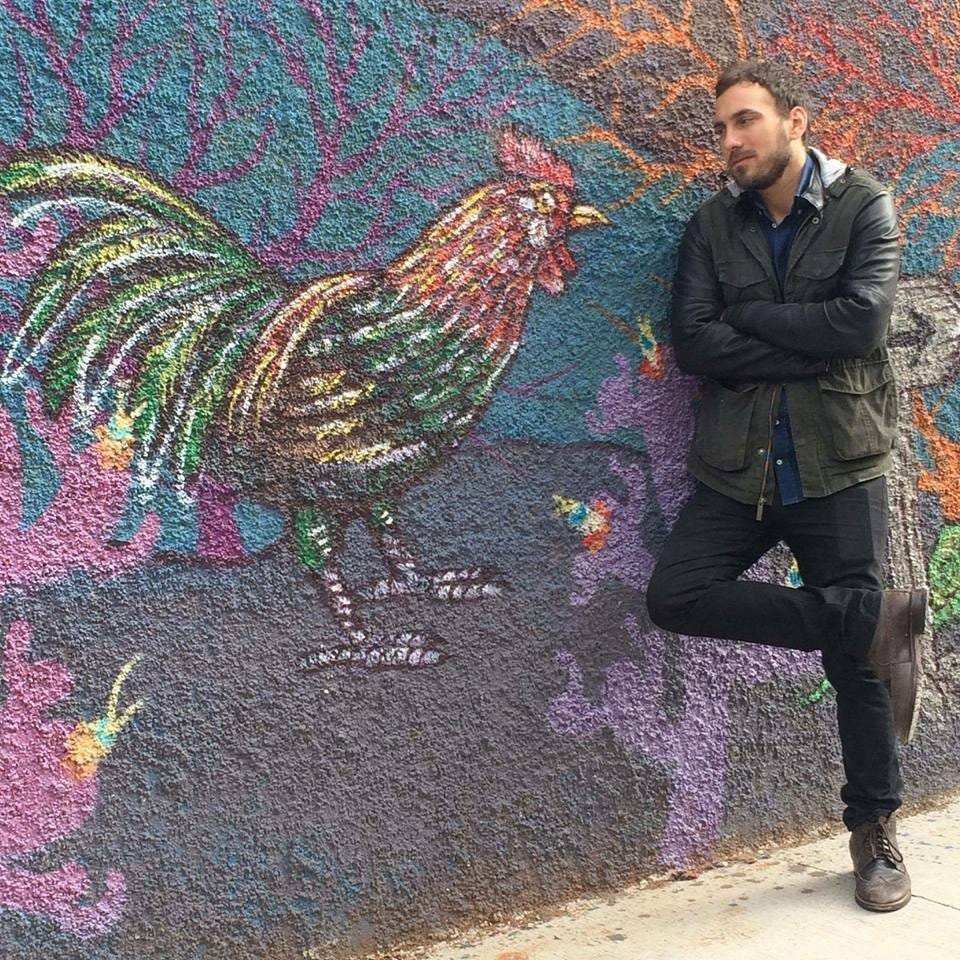
Zaidenwerg’s references to a Jewish upbringing and its internalized mythology, come off as rather natural, as in these lines (in Myers’ English translation):
“With all the human senses spent, the capsule of wind that held her spirit
rose up, bound for the gales, dissolved into
a centrifugal gust of light, just like Elijah in the whirlwind, raised skyward in a chariot of fire.
And though her life had died,
her memory left little consolation: the waters went unparted,”
Another layer sounds, smells, weighs distinctly Argentinean and of Buenos Aires.
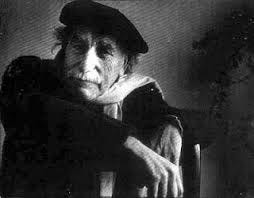
Zaidenwerg, in his “secularized” Judaic references, at his best brings to mind an older generation of urban, gritty Jewish poets from Argentina — like Luis Luchi and Juan Gelman, at times the more sensitive and cerebral Alberto Spzunberg — only, in a less exhilarating way, because Zaidenwerg lacks some (but not all!) of that freedom, humour, and picaresque emblematic of virtuoso Gelman (available in the outstanding English translation by Lisa Rose Bradford) or the embittered voice Luchi mastered thanks to a broken, pained life beyond intramuros of the university.
Lyric poetry is dead. They came for her
after they had come for the communists, the Catholics, the Jews, et cetera; in short, as soon
as they’d obliterated everyone who still
believed in something.”
The bleakness of noir, and a forensic tone of the poet as crime-scene-inspector appear with certain references. One part of the book takes the name of Alfredo Yabrán, a Syrian-Argentine businessman who received great political favours from then-president Carlos Saúl Meném during the 1990s (the poem links him to “spectral corporations’’ connecting with the most diverse mobsters; the merger of the security services with power in dozens of countries.’’) Seldom named today, Yabrán became infamous after the brutal execution of newspaper journalist Luis Cabezas, who while investigating the businessman leaked a photo showing the impresario’s face, and implicating him in a political corruption scandal involving Peronist politicians. Mobsters hunted the journalist down in the outskirts of Buenos Aires, and burnt him alive. Justice for Cabezas became a cause for the struggle for journalistic freedom in Argentina. It was rumoured the executioners enjoyed far-reaching connections to the political class. Yabrán committed suicide in 1998 before his trial could bring any new revelation. Zaidenwerg’s spectral poem “Yabrán’’ talks of a “timebomb detonating.’’ But the poet, unsatisfied with Yabrán being the “patsy’’ of a conspiracy, reminds us of politicians who let Yabrán take the fall: “They deny they found his cabeza de turco’’ or his “scapegoat” as Robin Myers translated.
In that one photograph
that went around the world, the strangest company
encircles the cadaver:
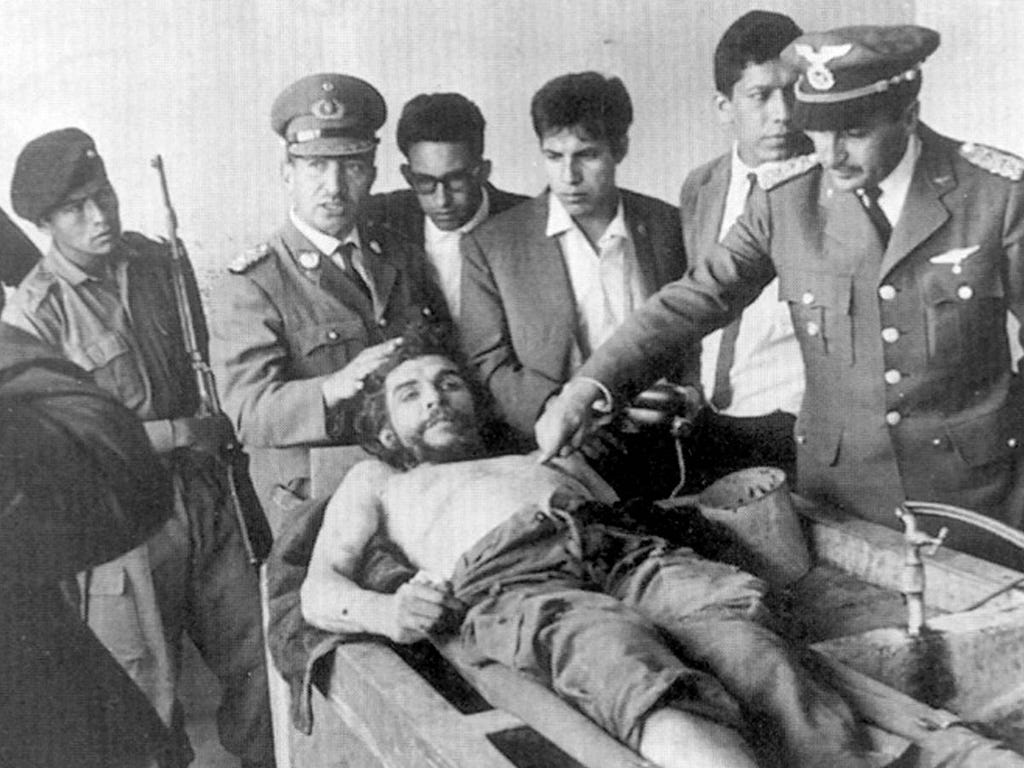
officials dressed in ornamented uniforms:
one glances to the camera pointed at him
while he supports the lifeless head,
posed like a hunter with his trophy;
the other, who appears of higher rank,
points with his right-hand index finger
to where the heart had beat,
as if he could revive it with his touch.”
Section V of Zaidenwerg’s Wasteland/detective story, calls out the Bolivian executioners of Argentinean-Cuban communist guerilla Ernesto Guevara, comparing Che’s killers to those who also butchered Lyricism —earlier personified as an abducted, detained entity. Here, translator Myers made choices that might have avoided keeping certain lurid subtleties, more readily interpreted from the original Spanish. For example, the lines that Robyn Myers translates as:
and so we drank to give us courage, and even then we couldn’t.
We simply
did what they had ordered us to do:
we went into the classroom where we were keeping her
and killed her as you’d kill an animal
that you had raised to eat.
The last words in the Spanish poem, “para comer’’ imply that for the executioners, killing counts as a normal job, something one does “to eat’’, to buy food, “it pays the bills” — though there’s also a sense of the cannibalistic, emphasized by translator Myers’ liberal insertion of the idea of “raising an animal to eat.’’ Torment becomes a job, done during working hours, numbed of feeling.
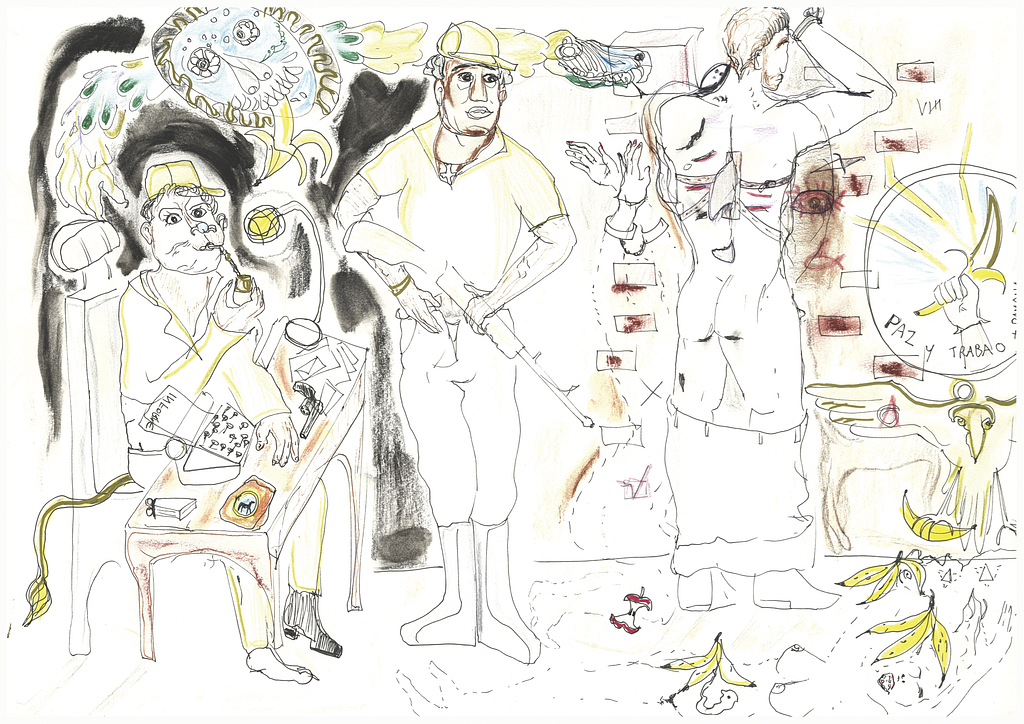
Inevitably, translators must skip certain double entendres. In Spanish, “aula’’ refers to a hallway, or a classroom in the university. The original text conveys allusion to the Academy — a famous lecture hall in the University of Buenos Aires’ Philosophy and Literature building even bears the name of Che Guevara. He was the poet — and yet, here the classroom teaches youths to murder the seeds poetry and of inspiration, extinguishing these.

Walls inside Argentinean public universities often show the pictures of students forcibly disappeared by the most recent dictatorship. Zaidenwerg holds up a mirror to his collegial professors of literary theory, telling the professoriat that it, too, has put on the jackboots of the military police, when they wrested Poetry, uprooting love of Poetry from their students, extinguishing inspiration. Zaidenwerg, like a clever mischief-maker, indirectly says to the Philosophy professor teaching in the auditorium named after Guevara — one of the few Argentineans who entered world-history, rather than part of national or sports folklore — “You killed Guevara!” after having said “You killed lyricism” These statements may be one and the same, though innocent of redundance.

We might have expected this from Zaidenwerg — those at all familiar with his work would inevitably see him as somewhat between an absurdist and a playful, lighter variation of the romantic, such as in his Pessoan tapestry “50 States” a bilingual book in which he as ventriloquist impersonates voices of 50 American poets he more or less invented, translating them into Spanish or into English. “50 States” enacted the Argentinean expatriates’ typical fascination with the Anglo-American poetry — a fascination which seems strangely endemic to many Latin American authors of our generation as they pore over every minute translation of Raymond Carver and the awarded apostles of his model of the MFA writing system, from Mark Strand to Louise Glück — an academicist anglophilia beloved by our generation of Latin American writers who apparently notice little contradiction with that and simultaneous anti-imperialist invective. But with La Lírica Está Muerta, as with the cathartic, joyous pranking of 50 States, Zaidenwerg makes pleasantly surprising departure from that vein of self-contradictory Latino academicism. An accomplished translator, he once specialised in Spanish renderings of the poets who embody the very reality decried in La Lírica , gaining prominence by hispanizing the top professors of Anglo American academic poetry such as Strand, Carson, Ben Lerner. Zaidenwerg’s breakaway rebellion here in Lyric Poetry is Dead sheds an inculpating light on the Argentine literary establishment, which (though more impoverished) can also mirror the Anglo literary institutions. In Argentina poets like Zaidenwerg, Alejandro Crotto and Daniel Lipara have made recent manifesto-like attempts at forming a counter-movement, vying to reclaim the lyrical and the quasi-religious in Argentinian poetry, resisting dominant trends of “objectivist” and “neo-baroque” — movements of empirical, realist-confessionalist poetry-styles that went viral in the 1990s thanks to the workshop (the latter largely featured extraverted poets sticking to their middle-class enclaves, reporting mostly on consumption, while occasionally trying to “slum it”). Such a response by Zaidenwerg’s generation, rejecting the consumerist vanguard of the 1990s, has become more needed and is finally winning some popularity in Argentinean poetry circles. Rarely, however, has his (our) generation approximated a seriousness of the dissident literary criticism leveled by Emiliano Bustos (a poet and son of the surrealist Miguel Ángel Bustos) towards the 1990s workshop-poetry.
Zaidenwerg does well to polemicise through poetry, on how this fragmentation, the violence of the Argentinean 1970s, ’80s and 90s’ , the preceding murder of Ernesto Guevara, and the bizarre defiling of the grave of populist leader Eva Perón, were all ultimately interconnected. The epic form in poetry suits modern Argentinean history well — or as Zaidenwerg’s muse-protagonist muses accurately of Argentina,
this wilderness where everything can grow,
but only hunger thrives
Hopefully the epic can be dusted off and renovated into a post-nationalist form, to be further endeavoured by poets of our generation. Rather than epic, “Lyric Poetry is Dead” is more a murder mystery in which the culprits are revealed, as poetry (unlike the novel) accelerates the piecing together of such puzzles, to hit directly at the emotional-intellectual pulse.
The embodiment of the Lyrical, at first, seems fluid, a being of light, although as the Autopsy report indicates, a dead being, murdered “in cold blood’’ and yet it flows, or she (the Lyrical in Zaidenwerg, at first, clearly has a feminine personae) flutters along the pages acquiring a different embodiment, always quintessentially Argentine.

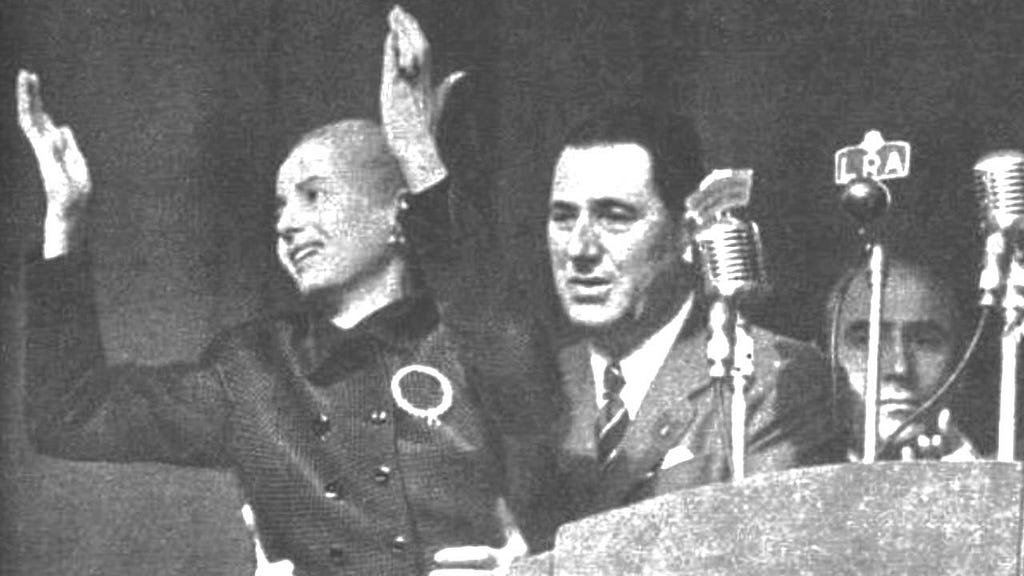
Later on, Zaidenwerg’s martyred fairy-queen shape-shifts again: now into the messianic figure of Eva Perón, still beloved by Argentineans, depicted in pop art as a modern saint. The strange plundering of Eva Perón’s tomb by her embalmer stood out as an eerie case that tingled the national spine. Zaidenwerg names the chapter after Dr Pedro Ara Sarriá, appointed mummifier of the beloved populist leader. Evita in life and posterity remained an often deified emblem in Argentinean politics, (known among English-speaking audiences mostly after Andrew Lloyd Webber’s musical and a much later Madonna epic) Here, Zaidenwerg continues forensic poet-forays into the Argentine necropolis, uncovering the killers of Lyric — those claiming status as the protectors (gatekeepers?) of poetry, when they are actually poesy’s very embalmers. Perhaps this role of avenger-of-the-muse suits poets generally. Dr Ara Sarriá faced public accusations of tomb-raiding necrophilia after the calumny. As the ancient African philosopher Tertullian said, “I believe it, because it is absurd”
Aptly, Zaidenwerg takes this troubling incident in Argentine history, to liken the desecrated leader with downtrodden Lyrical Poetry, and with the role of poetry and inspiration in our post-cataclysmic yet bored society.
Despite some concessions, and the loss of some important subtleties — at times, inevitable, but elsewhere, avoidable to a translator keen as Myers is at taking on challenges — Myers’ translation provides a reliable tour-guide through the forensic necropolis that hides the corpse and killer of Lyric Poetry in Zaidenwergs first, hopefully not final “Noir” collection.
~*~
Responsible(s):
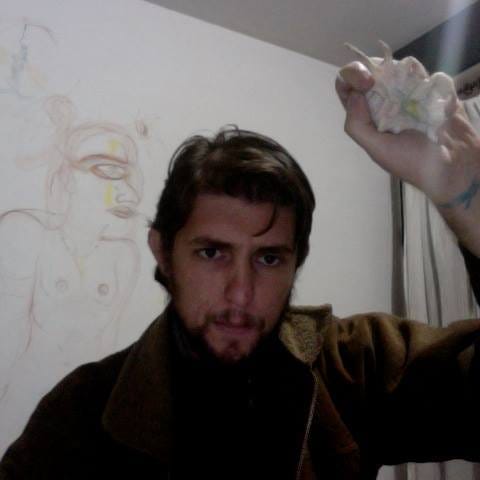
Arturo Desimone, Aruban-Argentinian writer and visual artist, born 1984 on the island Aruba which he inhabited until 22. Desimone’s articles, poetry and fiction pieces previously appeared in Círculo de Poesía (Spanish) Island (Tasmania) Drunken Boat, Missing Slate, EuropeNow, Al Araby Al Jadeed (Arabic) & ArubaToday. Relocated to Argentina to research his family background, and performed at the internat’l poetry festival of Granada, Nicaragua.
2 collections of poetry and visual art “recently” appeared in UK : “ Mare Nostrum / Costa Nostra “ (Hesterglock Press, 2019) and “Ouafa and Thawra: About a Lover from Tunisia” (Mwanaka Media 2019) reappearing in bilingual edition as La Amada de Túnez in Argentina (2020) with Clara Beter Ediciones. He recently was added to the redaction of Trasdemar, online magazine in Spanish devoted to lit from all islands .
~Notes on a Journey to the Ever-Dying Lands~ was originally published in Anomaly on Medium, where people are continuing the conversation by highlighting and responding to this story.
